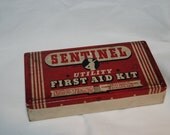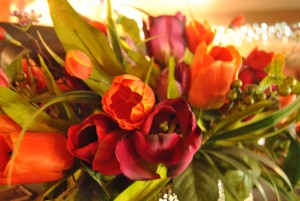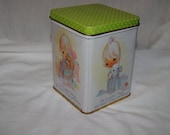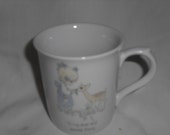A friend I made this weekend…Friday I worked, https://www.etsy.com/shop/DragonLaire?ref=hdr_shop_menu followed by lunch at Gators http://gatorsdockside.com/menu.asp and then met a friend at Tibby’s https://www.facebook.com/TibbysNewOrleansKitchen for drinks. Yesterday was dentist day….broke off part of a tooth and after a trip to a specialist https://www.perio.org/consumer/periodontist2.htm decided I’m gonna have it pulled….Hurting like crazy and tomorrow will hurt more as that’s when it gets pulled. …ouch.
“Behold the Lamb of God, which taketh away the sin of the world!” (Bible, John 1:29).
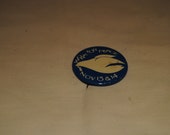
$9.00 USD

Incase you want something warm to cover you!!! https://creativgoods.com/products/outlander-sam-heughan-jamie-fraser-throw-fleece-blanket-001/ AND CHECK OUT THE GAG REEL: http://www.outlandertvnews.com/2015/07/watch-the-outlander-season-one-gag-reel/
The Shepherd represents Jesus who will search devotedly for even one lost Child of God until it is found. (Luke 15)
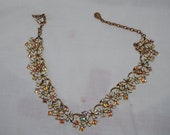
$40.50 USD
Today we continue symbolism with a look at the Christan symbols:

CREATURES
Ape—in at the early Christian art was a symbol of sin, malice, cunning and lust as well as sloth, greed and even sometimes to represent the king of evil himself Satan. I have no idea how or when this portrayal of apes was decided on.
Nightjars (a bird) were once the symbol of the wandering souls of children who had died unbaptized while the higher flying day bird, the Lark was a symbol of the humility of the priesthood.
Lion: Was used a lot in Renaissance art and generally was an emblem of strength and courage. It is interesting to know that legends of the period stated that lions were born dead but came to life three days later when their father breathed life into them, which then makes sense that they are sometimes equated with Christ.

PLANTS AND TREES
Grapes: When placed with grain was used to represent the Holy Communion offerings. More often it was equated with just the Wine since that is generally what came from it and through that it also represented the Blood of Jesus. Working in a vineyard was a symbol of good Christians and its vine of the “true Vine” the savior.
Rowan tree branches were a symbol of protection and the Holy Cross and its protection to homes–but the protective twigs and such had to come from a tree the seeker not only had never seen before but had no previous knowledge of either, the branches had to be cut with a household knife and brought home by route other than that what had been followed by on the outgoing route.
Violet flowers were for humility, (Mary was said to be the “violet of humility.” They (white ones that is) were also a symbol of St. Fina (patron of physically challenged people and spinners) whose final resting place was covered with the plants.

BETWEEN HEAVEN AND HELL
Dawn symbolized the Blood of Christ which overcame darkness and allowed the dawn of salvation. It also represents the Advent of Christ.
Grave Materials taken from any grave Christian or not are thought to contain death and anything built with them will not prosper and might even collapse, This is true of crops grown on lands formerly housing tombs/graves and it is felt that the grave’s curse of death might be passed on to the person doing the ploughing and their families.
Water symbolizes cleansing and purifying i.e. it is used in the sacrament of baptism. Pilate used it as a symbol of innocence–when he washed his hands. It has been used as a symbol of trouble and turbulence as well–“I am come into deep waters , where the floods overflow me” Psalm 69: 1, 2. And mixed with wine (Christ’s divinity) it is His humanity.

THE BODY
Heart has much symbolism: Understanding, love, courage, devotion, sorrow, and joy. The site of truth in a man: “the Lord looketh on the heart.” I Samuel 16:7. When the object is carried by a saint it is a symbol of love and piety. One on fire denotes religious fervor, while one pierced by an arrow is for contrition, repentance and devotion or for St Augustine’s guidance by God. A heart with a cross is for St. Catherine who is said to have had her heart replaced by Christ with his own and also St. Berardino of Siena (His preaching was frequently directed against gambling, witchcraft, sodomy and usury.)
Feet which spend a lot of time in the dirt and dust symbolizes humility and servitude (the woman who washes Jesus’ feet with her tears for instance or Jesus washing the feet of the disciples.) Maundy Thursday is a tradition in which bishops performed the ceremony of feet washing.
Skeletons are a symbol of death ( often pictured with scythe–cutting short–and an hour glass–swift passage of time) while the skull by itself is the symbol of the transitory nature of life on earth and the uselessness of vanity. It often appeared in saint’s pictures to suggest they were contemplating death (or with a cross eternal life)

RELIGIOUS DRESS
Alb–the white linen tunic representing chasity, purity and eternal joy of the redeemed. In the middle ages these included embroidery on the sleeves, chest and at the hem to represent the five wounds of Christ.
Tonsure the shaving the hair from the top of the head. Started in the early days of the church and was continued by the monastic orders in particular. It symbolizes remembrance of the crown of thorns, rejection of temporal things; and reminds of the perfect life.
Crucifix (Rood) represents Christ on the Cross and the Rosary as a form of devotion to the Virgin Mary which are known as mysteries (Joy, Sorrowful and the Glorious) counted on a string of beads. It was apparently developed by St. Dominic (Canonized in 1234 his major shrine is at San Domenico, Bologna.)
| S |

SO IN THIS PICTURE WE HAVE
Plums–Symbol of fidelity and independence but also just for decoration
Apples–symbol of Christ, the new Adam
Halos—behind the head to identify divine and sacred personages to identify their great dignity
Pearls–symbol of salvation, worth more than all the treasurers of earth.
Stork (look carefully on her gown) —symbol of prudence and vigilance, piety, and chastity.
Apple in the hands of Christ–Symbolizes salvation
Hyssop flower–for patience and humility.
Fly–in pictures of the Virgin and Child it conveys the idea of sin and redemption.
Sources:
SIGNS & SYMBOLS IN CHRSTIAN ART By George Ferguson
THE BOOK OF CHRISTMAS
THE ENCYCLOPEDIA OF SUPERSTITIONS by E.&A. Radford


